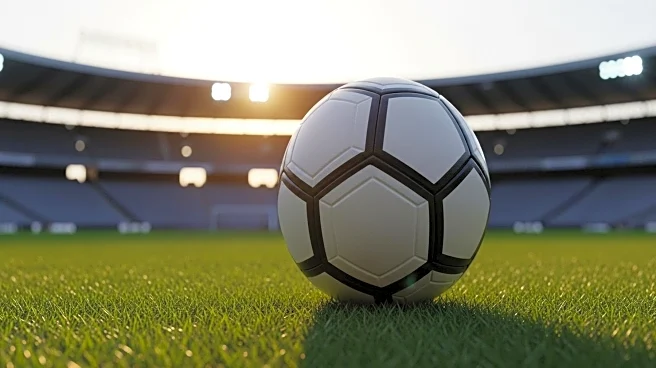What's Happening?
The Premier League has seen a surge of young talent making significant impacts on the field. Notable among these are Liverpool's Rio Ngumoha and Arsenal's Max Dowman, who have broken through age barriers to compete at the highest level. Ngumoha, who recently turned 17, scored a decisive goal against Newcastle, while Dowman, at just 15 years old, won a penalty for Arsenal on his debut. This trend of young players entering the league is not new, with historical precedents like James Milner and Wayne Rooney setting records as teenagers. The presence of these young athletes poses unique challenges for veteran players, who must adapt to the pace and skill of their younger counterparts.
Why It's Important?
The emergence of young players in the Premier League highlights the evolving nature of football, where age is becoming less of a barrier to entry. This shift has implications for team dynamics and player development strategies, as clubs may increasingly focus on nurturing young talent. For veteran players, this trend necessitates adjustments in their approach to the game, as they face opponents who are often faster and more agile. The success of these young players can also influence the market value and scouting priorities of clubs, potentially leading to a greater emphasis on youth academies and training programs.
What's Next?
As young players continue to make their mark, clubs may invest more in youth development and scouting to identify potential stars early. This could lead to changes in transfer policies, with teams prioritizing the acquisition of promising young talent over established players. Additionally, the performance of these young athletes will be closely monitored, as their success could redefine expectations and strategies within the league. Veteran players may need to adapt their training and gameplay to remain competitive against these emerging talents.
Beyond the Headlines
The rise of young players in the Premier League also raises questions about the pressures and expectations placed on teenagers in professional sports. Balancing their development with the demands of top-tier competition is crucial to ensuring their long-term success and well-being. Furthermore, this trend may influence cultural perceptions of age and capability, challenging traditional views on the readiness of young athletes for professional sports.











